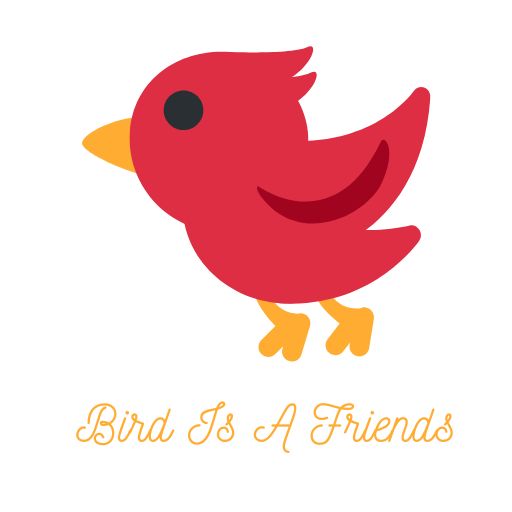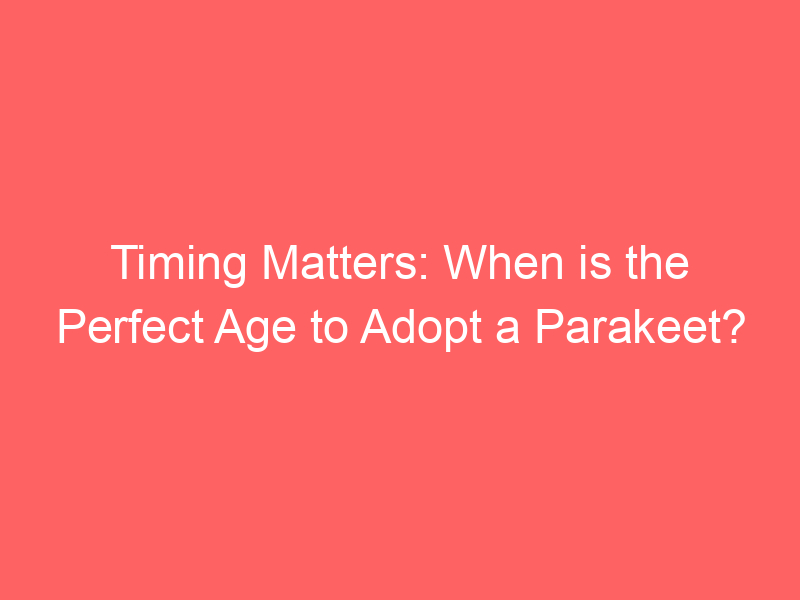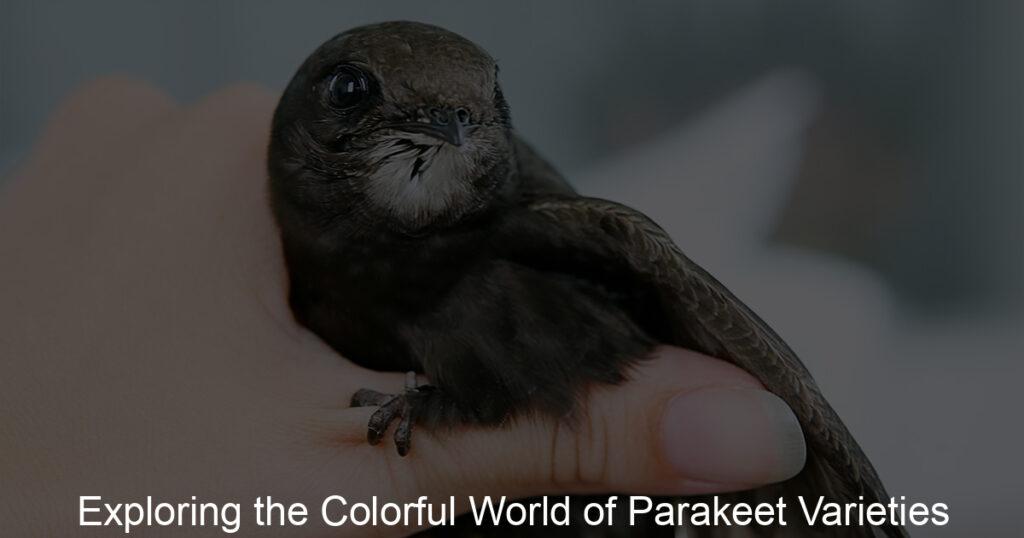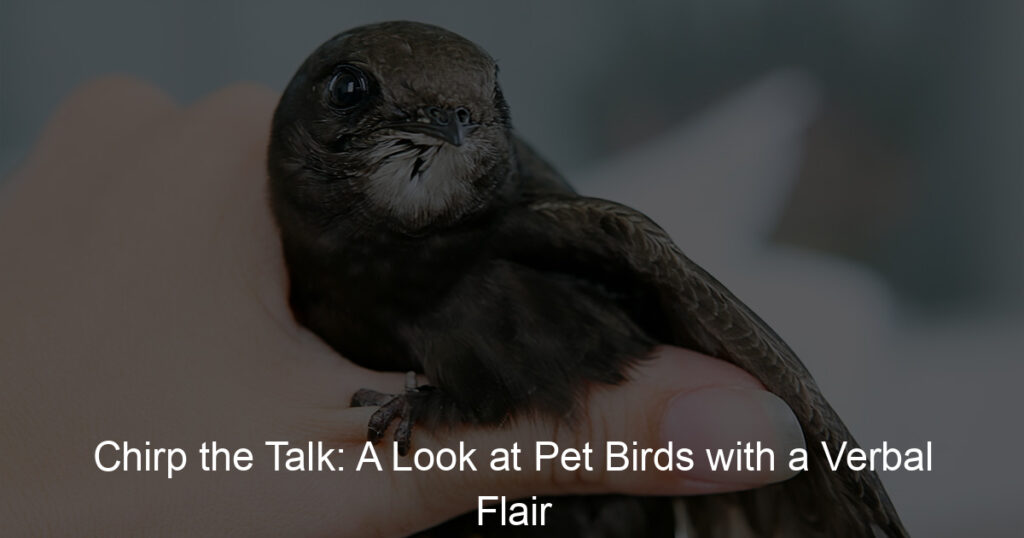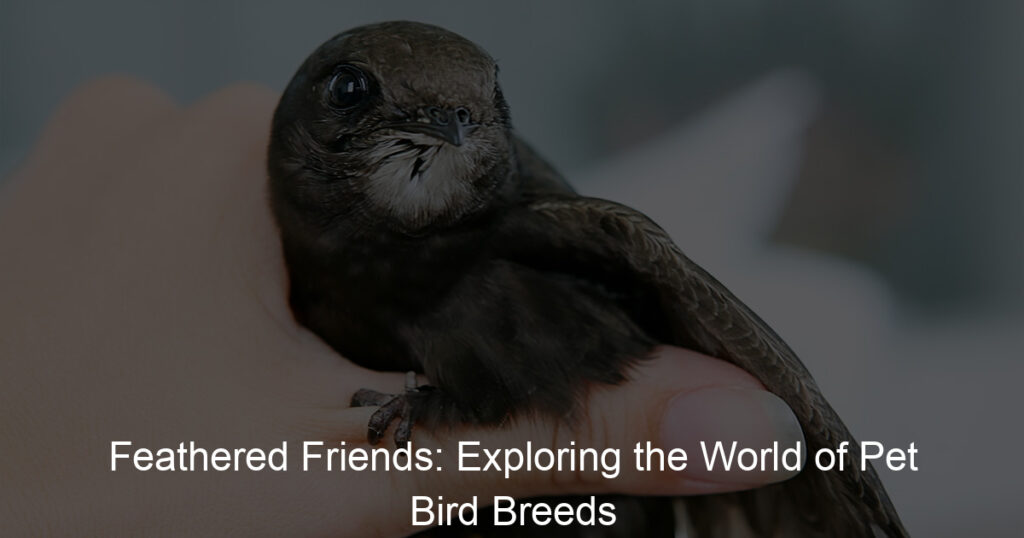
Introduction to Adopting a Parakeet
Adopting a pet is a significant decision that requires careful thought and consideration. This is especially true when it comes to adopting a pet bird like a parakeet. In this section, we will explore the commitment involved in adopting a pet bird and why a parakeet might be the perfect choice for you.
- Understanding the commitment of adopting a pet bird
Adopting a pet bird is not a decision to be taken lightly. Birds, especially parakeets, require a lot of care and attention. They need a clean and spacious cage, a balanced diet, and plenty of interaction and stimulation. They also have a long lifespan, with some parakeets living up to 15 years or more. This means that adopting a parakeet is a long-term commitment that can last for many years.
However, the rewards of owning a parakeet can be immense. They are intelligent and social creatures that can form strong bonds with their owners. They can also be trained to perform tricks and even mimic human speech, providing endless entertainment and companionship.
- Why choose a parakeet as a pet?
Parakeets, also known as budgies, are one of the most popular pet birds worldwide. There are several reasons why you might choose a parakeet as a pet. First, they are relatively easy to care for compared to other bird species. They are small in size, which means they require less space and are easier to handle.
Second, parakeets are known for their friendly and sociable nature. They enjoy interacting with their owners and can be quite affectionate. They also have a cheerful and lively personality, which can bring a lot of joy and energy to your home.
Finally, parakeets are highly intelligent and can be trained to perform various tricks and tasks. They also have the ability to mimic human speech, which can be a source of great amusement and fascination.
In conclusion, adopting a parakeet is a serious commitment, but one that can bring immense joy and companionship. If you are willing to provide the necessary care and attention, a parakeet can make a wonderful pet.
Parakeet Age for Adoption: Why Timing Matters
When it comes to adopting a parakeet, timing is everything. The age of the bird at the time of adoption can significantly impact its health, behavior, and adaptability. This section will delve into the importance of understanding the parakeet’s life cycle and why age matters when adopting a parakeet.
- Understanding the life cycle of a parakeet
Parakeets, also known as budgies, have a fascinating life cycle. They hatch from eggs after about 18 days of incubation. For the first few weeks, they are entirely dependent on their parents for food and warmth. By the time they are 3-4 weeks old, they start to develop feathers and begin to explore their surroundings.
At around 6-8 weeks, parakeets become fully fledged and can fly. This is also the time when they start to learn social skills and communication from their parents and siblings. By the time they reach 3-4 months, they are considered young adults and are ready to breed. Parakeets have a lifespan of about 10-15 years, depending on their health and living conditions.
- Importance of age when adopting a parakeet
Adopting a parakeet at the right age is crucial for several reasons. Firstly, young parakeets are easier to tame and train. They are more adaptable and can easily adjust to new environments and routines. If you adopt a parakeet that is too young, it may not have learned essential social skills from its parents and siblings, which could lead to behavioral issues later on.
On the other hand, older parakeets may have established habits and behaviors that can be difficult to change. They may also have underlying health issues that are not apparent at the time of adoption. Therefore, it is generally recommended to adopt a parakeet that is between 3-4 months old, as they are young enough to be easily tamed and trained, but old enough to have learned essential social skills.
In conclusion, understanding the life cycle of a parakeet and the importance of age when adopting can help ensure a successful adoption and a happy, healthy pet.
Right Age to Adopt a Parakeet
When it comes to adopting a parakeet, age plays a crucial role. The right age for adoption can significantly impact your relationship with your new feathered friend. Let’s explore the pros and cons of adopting a baby parakeet.
Adopting a Baby Parakeet
Adopting a baby parakeet, often referred to as a ‘chick’, can be an exciting journey. Here are some advantages and disadvantages to consider:
- Pros of adopting a baby parakeet
- Cons of adopting a baby parakeet
Adopting a baby parakeet offers a unique opportunity to bond with your pet from a young age. You can train them according to your lifestyle, and they are more likely to adapt to new environments. Baby parakeets are generally healthier and have a longer lifespan ahead of them.
On the flip side, baby parakeets require more care and attention. They need to be fed more frequently and monitored closely for health issues. They may also be more prone to stress in a new environment. Training a baby parakeet can be time-consuming and requires patience.
In conclusion, adopting a baby parakeet can be a rewarding experience if you are prepared for the responsibility. It allows for a deep bond to form and offers the chance to shape your pet’s behavior from a young age. However, it does require a significant time commitment and a patient approach to training.
Adopting an Adult Parakeet
When considering adopting a parakeet, many potential pet owners weigh the pros and cons of adopting an adult bird. Here, we’ll discuss some of the advantages and disadvantages of adopting an adult parakeet.
- Pros of adopting an adult parakeet
- Cons of adopting an adult parakeet
Adopting an adult parakeet has several benefits. For starters, adult parakeets often have a more established personality, making it easier for you to select a bird that fits well with your lifestyle and personality.
Secondly, adult parakeets are often already trained, which can save you a lot of time and effort. They are usually comfortable with human interaction and may already know how to step up onto your finger, respond to their name, and even do some tricks.
Lastly, by adopting an adult parakeet, you are giving a home to a bird that might otherwise be overlooked in favor of younger, ‘cuter’ birds. This can be a rewarding experience, knowing that you’ve made a significant difference in the life of your new feathered friend.
However, adopting an adult parakeet also has its challenges. One potential downside is that adult parakeets may come with some behavioral issues, especially if they were not properly cared for by their previous owners. These issues can take time and patience to resolve.
Another potential disadvantage is that adult parakeets may require more immediate medical care, especially if they were not well cared for previously. This could include everything from routine check-ups to more serious medical interventions.
Finally, while adult parakeets can bond with new owners, this process can sometimes take longer than with a younger bird. It’s important to be patient and give your new pet plenty of time to adjust to their new surroundings.
In conclusion, adopting an adult parakeet can be a rewarding experience, but it’s important to be aware of the potential challenges as well. With patience, understanding, and care, an adult parakeet can make a wonderful addition to your family.
Parakeet Adoption Guide: How to Choose the Right Parakeet
Adopting a parakeet is a significant commitment. These colorful, lively birds can bring joy and companionship into your life. However, it’s crucial to choose the right parakeet for your lifestyle and environment. Here are some factors to consider and tips on understanding parakeet behavior and personality.
- Factors to Consider When Choosing a Parakeet
Choosing the right parakeet involves more than selecting the prettiest bird. Here are some factors to consider:
| Factor | Description |
|---|---|
| Age | Younger birds are easier to train, but older birds may already have some training. |
| Health | A healthy parakeet has bright eyes, clean feathers, and an active demeanor. |
| Temperament | Some parakeets are friendly and sociable, while others are shy or aggressive. |
| Size | Ensure you have enough space in your home for the bird’s cage and play areas. |
Remember, every parakeet is unique. Spend time with the bird before adoption to ensure it’s a good fit for your home.
- Understanding Parakeet Behavior and Personality
Parakeets are intelligent, social creatures with unique personalities. They communicate through a variety of chirps, squawks, and body language. Here are some common behaviors:
| Behavior | Meaning |
|---|---|
| Chirping | Parakeets chirp when they’re happy, excited, or want attention. |
| Fluffing Feathers | This usually means the bird is relaxed and comfortable. |
| Head Bobbing | Parakeets bob their heads when they’re excited or trying to get your attention. |
| Biting | Parakeets may bite if they’re scared, stressed, or don’t want to be handled. |
Understanding your parakeet’s behavior can help you form a strong bond with your new pet. Remember, patience and consistency are key when building trust with your parakeet.
When to Adopt a Bird: Best Seasons for Parakeet Adoption
Adopting a parakeet is a significant commitment that requires careful planning. One of the factors to consider is the timing of the adoption. The season in which you choose to adopt a parakeet can greatly impact both you and your new feathered friend. In this section, we will delve into understanding parakeet breeding seasons and why certain seasons are better for parakeet adoption.
- Understanding parakeet breeding seasons
Parakeets, also known as budgies, typically have their breeding season in the spring. This is when the birds are most likely to lay eggs and raise their young. However, in captivity, parakeets can breed year-round if the conditions are right. It’s important to note that parakeets bred in the spring are usually ready for adoption by late summer or early fall, once they are fully weaned and independent.
- Why certain seasons are better for parakeet adoption
While parakeets can be adopted at any time of the year, there are certain seasons that may be more beneficial for both the bird and the adopter. Adopting a parakeet in the late summer or early fall, after the breeding season, ensures that the bird is mature enough to leave its parents and adapt to a new home. This timing also allows the adopter to provide a stable environment for the bird during the colder months, when parakeets need extra care to stay healthy.
Moreover, adopting a parakeet during the school year can be a great opportunity for children to learn responsibility and develop a bond with their new pet. It’s also a time when families are generally more settled into their routines, which can help with the transition of bringing a new pet into the home.
In conclusion, while there’s no perfect time to adopt a parakeet, understanding their breeding seasons and considering your own circumstances can help you make the best decision for you and your future feathered friend.
Parakeet Care Post-Adoption
Once you’ve adopted a parakeet, the real journey begins. It’s crucial to provide the right care to ensure your new pet thrives in its new environment. Let’s explore how to set up your parakeet’s new home.
Setting Up Your Parakeet’s New Home
Creating a comfortable and stimulating environment for your parakeet is paramount. Here’s a step-by-step guide on how to do it.
- Choosing the right cage and location
- Providing toys and stimulation for your parakeet
The cage is your parakeet’s home, so it’s important to choose one that’s spacious, secure, and easy to clean. A good rule of thumb is to get a cage that’s at least twice as wide as your parakeet’s wingspan. The cage should be placed in a quiet, well-lit area, away from direct sunlight and drafts. Remember, parakeets are social creatures, so the cage should be in a room where your family spends a lot of time.
Parakeets are intelligent and curious birds that need mental stimulation. Toys are an excellent way to keep them entertained and promote exercise. Consider a variety of toys such as bells, ladders, swings, and chew toys. Rotate the toys regularly to keep your parakeet interested. Additionally, spend time interacting with your parakeet daily to build a bond and provide social stimulation.
In conclusion, setting up your parakeet’s new home involves careful consideration of the cage and its location, as well as providing a variety of toys for mental stimulation. With these steps, you’ll create a welcoming environment that will help your parakeet thrive post-adoption.
Feeding Your Parakeet
Feeding your parakeet is an essential part of their care. It’s important to understand their dietary needs and know how to introduce new foods to them. Let’s delve into these topics.
- Understanding a Parakeet’s Dietary Needs
Parakeets, also known as budgies, are small birds with big appetites. Their diet in the wild consists of a variety of seeds, fruits, and vegetables. However, a seed-only diet is not healthy for a pet parakeet. They need a balanced diet that includes fresh fruits and vegetables, grains, and a small amount of protein.
| Food Type | Examples |
|---|---|
| Fruits and Vegetables | Apples, carrots, spinach |
| Grains | Brown rice, quinoa, oats |
| Protein | Boiled eggs, cooked chicken |
Remember, not all human foods are safe for parakeets. Always research or consult with a vet before introducing a new food.
- How to Introduce New Foods to Your Parakeet
Introducing new foods to your parakeet can be a challenge, as they can be wary of new things. Here are some steps to make the process easier:
- Start Small: Begin with small portions of the new food. This can be less intimidating for your bird.
- Be Patient: It may take time for your parakeet to try new foods. Don’t rush the process.
- Make it Fun: Try arranging the food in a fun way or mixing it with their favorite seeds to make it more appealing.
Remember, each parakeet is unique and may have different food preferences. It’s all about trial and error. With patience and persistence, your parakeet will be enjoying a variety of healthy foods in no time.
Conclusion: Adopting a Pet Parakeet
As we draw this comprehensive guide to a close, it’s important to revisit some of the key points we’ve discussed. Adopting a pet parakeet is a rewarding experience that comes with its own set of responsibilities and considerations. Let’s take a moment to reflect on these.
- Recap of the importance of timing in parakeet adoption
- Final thoughts on the joy and responsibility of parakeet ownership
Throughout this guide, we’ve emphasized the importance of timing when it comes to adopting a parakeet. The age of the bird at the time of adoption can significantly impact its ability to adapt to a new environment and bond with its new owner. As we’ve learned, the ideal age for adopting a parakeet is between 3 to 4 months. This is when they are most receptive to training and socialization.
Parakeet ownership is a journey filled with joy and learning. These vibrant and intelligent birds bring a lot of happiness and companionship. However, it’s also a commitment that requires time, patience, and understanding. From providing a safe and comfortable habitat to ensuring a balanced diet and regular exercise, parakeet care is a hands-on experience.
In conclusion, adopting a pet parakeet is a decision that should not be taken lightly. It requires careful consideration and preparation. But with the right approach and commitment, it can be one of the most rewarding experiences of your life. Remember, a parakeet is not just a pet, but a companion that will share your life for many years to come.
